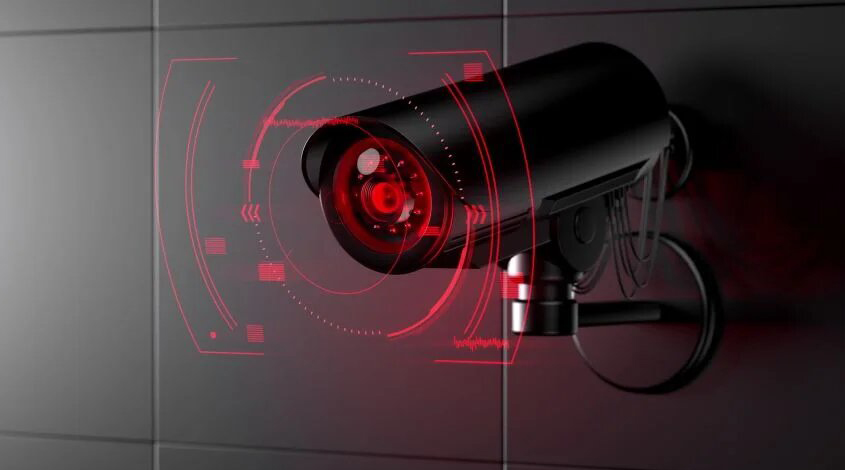This year, technology will not stop evolving: high-speed networks, big data, and deep learning have left the category of typical jargon marketing to become technologies capable of opening the door to new and better security solutions. In a similar way, the Internet of Things will lose its novelty status and will become much more integrated into our daily lives.
That will force manufacturers of connected devices to step up and take more responsibility when it comes to protecting their equipment. All of these factors are likely to drive the demand for security solutions, both physical and online.
Security as a Service
As has happened with many other technologies, customers will soon stop seeing physical security as a simple set of solutions hardware and software connected to a network and will begin to value it as a service, based on remote and professional monitoring of the network. CCTV Cameraand NVR video Recording streamed from the customer’s premises.
This change of approach will likely take place with the mediation of industry specialists, who will not only take care of managing the complex systems involved but will also help reduce the costs necessary to keep the systems up to date and protected. This will not only free up internal resources that you can use for other tasks but will also improve the service level of the security system, device management, and cybersecurity processes.
Precisely in the field of cybersecurity, we have observed an increase in the use of tools and practices designed to reduce the vulnerability of network video to attacks.
Integrated Solutions
The security industry will continue to move down the path of offering problem-specific solutions rather than solutions hardware/software universal. Ultimately, customers are not just looking for a camera or video (VMS); but what they really need is to reduce theft, ensure that only certain people can access the counting room, or have possible control threats at an airport.
Although technology companies often abuse the word ‘solutions’, in this case, the term could not be more appropriate. The evolution of hardware and software, and also of tools for before and after installation towards comprehensive solutions, will allow us to respond to specific security problems. These solutions will consist of high-performance cameras and storage and access control systems tightly integrated with management and analytics tools video. This approach will make the purchasing, installation, and deployment processes easier for customers while providing an excellent return on investment.
New Horizons of Analytics
As part of this process, although the high-quality video is an essential element of modern security cameras, ultimately this information needs to be evaluated and analyzed before a decision can be made in response to its content.
The latest technological advances in cameras, such as thermal imaging and new features for using cameras in low light, have been a significant step forward. However, in the end, the result is a greater volume of video to analyze or review. Just as new tools have been developed to tidy up the enormous volume of text and numerical data collected every day; the security industry has spared no effort to develop video analytics software capable of helping professionals in real-time to make better decisions.
Very possibly is the year in which manufacturers integrated these new camera features finally with real-time analytics to respond to different security problems, such as facial recognition, forensic analysis, or perimeter protection.
Deep Learning
Faced with this growing volume of data, deep learning technologies have a greater role every day. These solutions use software pattern recognition to identify different types of behaviors observed through security cameras installed around the world.
Techniques based on deep learning and artificial intelligence are called to play a leading role in the security sector. The reason is that, although every customer is different, the environments and places they normally move through fall into the same general categories; which is why people tend to display similar behaviors. Once it has learned these behaviors, it can share the patterns behind them, so the system is able to detect if something unforeseen happens. However, this is only the beginning and we have a future full of extremely exciting possibilities ahead of us.
Beyond the Video
We are aware that physical security is not limited to the surveillance of people, places, or objects, but also involves the control of physical access, one-way and two-way communication, and the management of emergency situations, management that often must perform from a distance.
For this reason, to take the concept of integration a little further has to be the year in which security cameras are permanently integrated with smart doors, door openers, and loudspeakers, both locally and locally. remote. The result will be, therefore, a single system capable of managing them all, in real-time, so that customers can see, hear and talk to people located in their buildings or nearby.
Cybersecurity
We remain convinced that living surrounded by millions of connected devices is an extraordinary prospect for the future, but we received serious warnings about the risks of insufficient protection of refrigerators, VCRs, and, unfortunately, also security cameras with an Internet connection. Considering that in most cases customers simply plug these devices in and turn them on, it is the responsibility of the manufacturers to ensure that they are safe from the first minute.
For Axis, the safety of its customers has always been a priority and we hope that from 2017 it will also be a priority for other manufacturers. For our part, we will continue to strengthen our product offering and help our customers protect their networks and devices.
We believe that the Internet of Things should bring with it more security and more efficient processes, organizations, and cities. Thanks to intelligent and connected cameras, video intercoms, and audio systems. These devices will be even smarter, allowing customers to focus on their priorities and security experts to improve their service offerings.
















